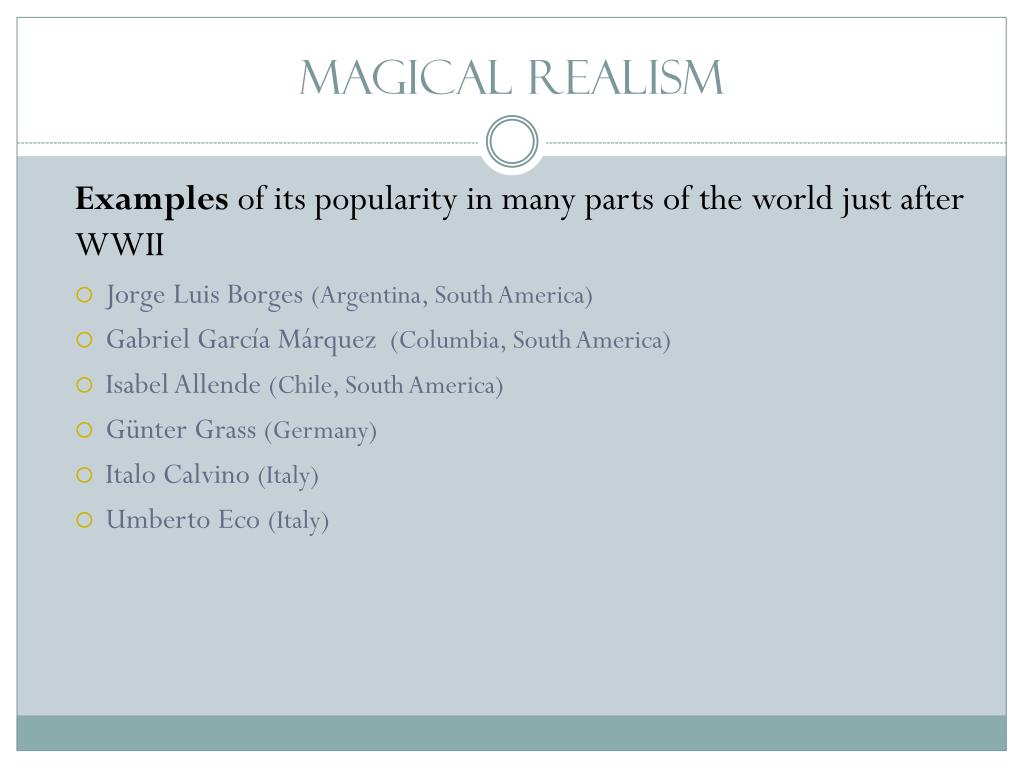

Though many other post-war art movements were growing in popularity throughout Europe, magical realism began influencing artists and writers across Europe over time. And it was particularly its ability to comment on political and social issues that gained it currency and success. Whereas magical realism transposed fantastical elements onto a more identifiable, solid reality. Surrealism was typically more focused on abstract, psychological realities. Moreover, Roh identified magic realism’s focus on material objects as distinguishing it from a similar genre, surrealism. At the time, the term “magic” did not explicitly mean fantasy but the amazement and bewilderment towards everyday objects and the real world. It concerned the post-expressionist art movement in Germany “ Neue Sachlichkeit” (“New Objectivity” in English).įranz Roh utilized the phrase to describe artists’ depictions of the magical within the ordinary. Magical realism, or as German art critic Franz Roh called it, “magischer realismus”, was first referenced in 1925. So let’s take a look at its origins… The History of Magical Realism Origins Magical realism’s history is crucial to understanding its power, resonance and practicality. Creators have used their respective mediums – painting, writing and filmmaking – to aid in magical realism’s ever-evolving growth as a sub-genre. The characteristics of the magical realism genre have developed over time through different art forms. Instead, by not acknowledging the mystical aspects of their worlds as supernatural, these components become part of their realities. It tells a fictional story, portraying the real world with elements of magic and fantasy.Ĭharacters within the realistic worlds of these stories do not question the fantastical attributes of their worlds. Magical realism is a sub-genre in film, literature and art.

But though contradictory, it describes what the genre truly is a merging of fantasy and realism. The phrase magical realism is really an oxymoron.

How Does the Setting Reflect the Story and its Themes?.Three Key Elements of a Magical Realism Film.The goal here is to captivate readers and transport them to a world where anything is possible. By incorporating these elements, writers can create complex characters and settings that blur the line between fantasy and reality.īy understanding the characteristics, techniques, and magical realism tropes, writers can create stories that are both realistic and fantastical. These could include using dream logic, surrealism, and poetry. Your character must have their eyes opened to the magical reality of things during the story to take advantage of magical realism tropes.įinally, writers should consider other magical realism tropes and subtle nods at subtle magical elements. Even though we’re talking about writing fantasy, it should seem natural and like an organic element of the world you’re writing-our real world, but enhanced in some way. Another is that the characters should have an authentic belief in the spiritual-magical potential of the world. It may not be available or visible to all but it’s not too tough to tap into, either. One characteristic is that the magic should fit with the world and not distort it. When using magical realism tropes, writers should also consider the key characteristics of the genre. (Though all tones exist within magical realism, so don’t be afraid to explore light-hearted or downright comedic stories, too.) This technique links magical realism to indigenous American cultures and acknowledges the spiritual-magical potentials of the more-than-human world. Writers can use techniques such as the Marvelous Real, which is a concept developed by Cuban writer Alejo Carpentier. The magic should not be surprising or out of place. It’s just like our reality, but with a few magical realism tropes and elements thrown in. The key to writing magical realism is to make sure that the magic is part of everyday reality for the characters.


 0 kommentar(er)
0 kommentar(er)
